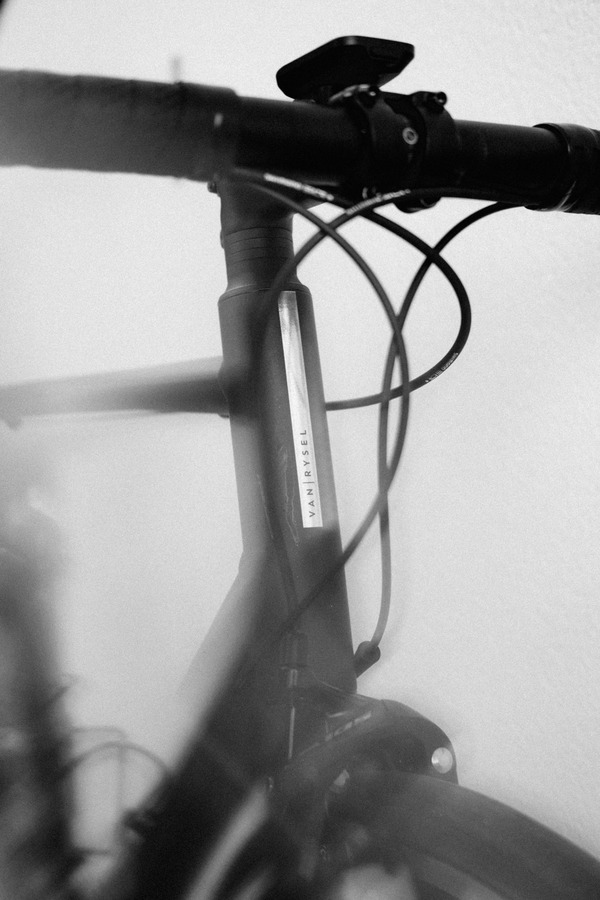If you have noticed that your bike fork is loose, you may be wondering why and what you can do about it…
Why is my bike fork loose?
When your bike fork is loose, you should check to make sure that the stem is holding it properly. To do this, first, loosen the bolts that are holding the stem to your steer tube on the fork, and then you’ll want to tighten the cap that you’ll see at the top of your steer tube.
Be sure to check that the cap is pushing down on the rings that are present on the steer tube, rather than on the tube itself. This should allow you to tighten the fork properly so that it is no longer loose or wobbly.
Is it safe to ride with a loose headset?

No, it is not safe to ride with a loose headset, as this could damage or even destroy the headtube, the fork, or even both.
Try feeling for clicking or clunking in the front end of your bike and if you can feel this, then you’ve got a loose headset and it’s time to do a little home maintenance or to bring it into the shop.
How do you fix a wobbly headset?
When you have a wobbly headset, usually this is because one of the headset pieces has changed position during normal operation of the bike. You’ll often notice a clunking or loud click from the front end of the bike when you go to use it.
If this is the case you’ll need to tighten the top nut and stem to secure it properly in place again, although if you are not comfortable doing this then it’s best to simply take it into the shop to be tightened.
Don’t try to ride your bike during this time, as this wobbling makes it easy to damage the fork or the headtube!
What is fork sag?
When you hear the term ‘fork sag’, this is referring to how much the fork will adjust downward in response to your body weight when both feet are off the ground as you are pedaling the bike. When it’s more than normal, the suspension will be lower to the ground, and you have an increased chance of damaging it.
Even with a mild sage, when traversing rougher terrain or hitting a bump such as a speedbump in the road, then you will have a greater chance of “bottoming out”, so if you notice a fork sag then you’ll want to get this repaired quickly before you start using the bike again.
How do I know if my fork seals are broken?
The easiest way to check this is to get a fresh, clean washcloth, and use it to wipe the areas thoroughly around the lower part of the fork around the seals. Once it is nice and clean, take the bike for a quick, 5-minute run, and pedal vigorously while you do so.
After this, take the bike back to your garage so that you can get a good look at it in bright light, and check the lower fork again. Look for a grimy residue around the area that you’ve cleaned and if you see anything there, then it’s likely that the seals are compromised and will need to be replaced.
What happens when forking bottoms out?
Usually, nothing, as bottom-out is going to happen from time to time and a fork is designed with this in mind. That’s because the bottom of the fork has a bumper on it, and you’ll see if you take another look now that you know it’s going to be there.
Bottom-out bumpers are placed on forks to help compensate for bottoming out and to prevent metal-to-metal contact, although if you notice that you seem to be bottoming out frequently, then you should check the PSI for your air spring or have a local shop do it so that you will bottom out less.
How tight should a bike headset be?
The best way to set it to proper tightness is to tighten the bolt until the movement is too stiff. Once this is the case, then loosen it slowly until it is tight, but still responsive when you are steering.
You’ll need to do this carefully, with 1/8 turns being the best way to loosen it without loosening TOO much. This takes a little practice, but we recommend that you do this yourself so that you can get a feel for it.
Once you do, you can tighten it properly in a matter of seconds, so it’s worth your effort to learn this little trick.
What does a loose headset feel like?

You’ll know that the headset is loose. Typically, it’s going to knock, or rattle, or you’ll just notice that it is creaking when the operation was silent before. It will be something that you won’t just feel, but you’ll hear as well.
If you want to give it a quick test, get a light forward momentum and then simultaneously push down on the headset while squeezing the front brake lever. You should hear a faint or even loud knock, creak, or ‘click’, and you’ll notice a slight or pronounced ‘shift’ in the headset that wasn’t there before.
Why is my MTB headset clicking?
If your MTB headset is creaking and you’ve been maintaining the bearings by making sure that they are both cleaned and properly greased, then check the head tube, specifically focusing on the cups.
You should be able to see where the problem is by putting your focus there and engaging the brake lever, rocking the bike back and forth while you are looking. Likely this will show you that the problem is between the cups and the frame, but if you aren’t certain then go ahead and bring it into the shop.
Do NOT ride the bike during this time, as you could damage your bike in the process, so put it on your car’s bike rack or take the wheels off and put the frame in your trunk to get it to the shop for a closer look.
Is my headset tight enough?
The easiest way to check if your headset is tight enough is to simply try adjusting the spacers, If you cannot turn them without a massive effort, then they are just about perfect. If they move easily, however, then you need to go ahead and tighten them until you cannot loosen them again without a huge effort.